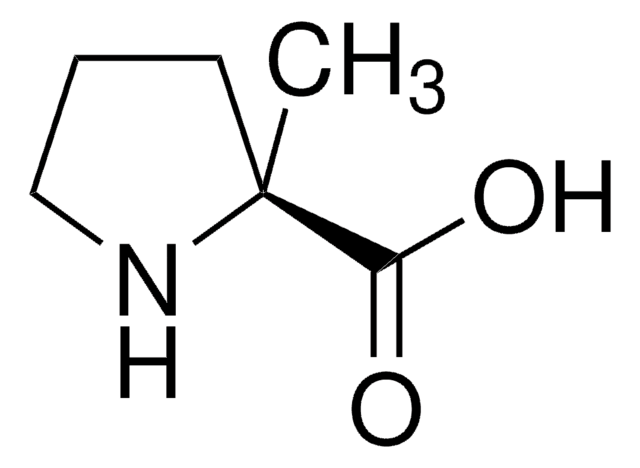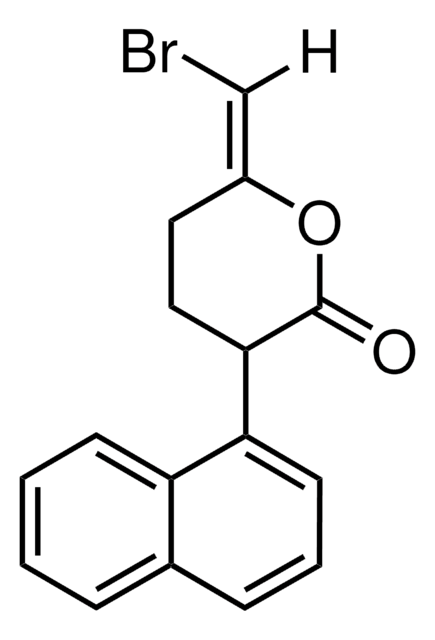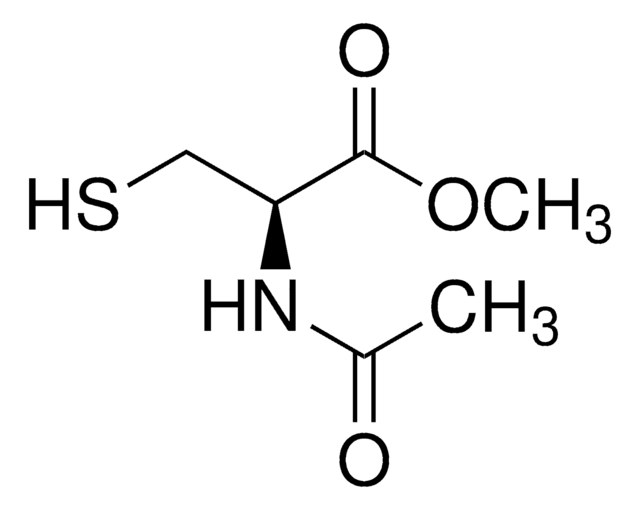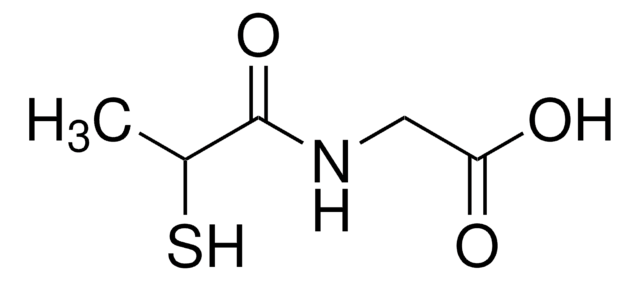A2478
APHA Compound 8
solid, ≥98% (HPLC)
Synonym(s):
3-(1-Methyl-4-phenylacetyl-1H-2-pyrrolyl)-N-hydroxy-2-propenamide
About This Item
Recommended Products
Product Name
APHA Compound 8, ≥98% (HPLC), solid
Quality Level
Assay
≥98% (HPLC)
form
solid
solubility
DMSO: >10 mg/mL
H2O: insoluble
storage temp.
2-8°C
SMILES string
Cn1cc(cc1\C=C\C(=O)NO)C(=O)Cc2ccccc2
InChI
1S/C16H16N2O3/c1-18-11-13(10-14(18)7-8-16(20)17-21)15(19)9-12-5-3-2-4-6-12/h2-8,10-11,21H,9H2,1H3,(H,17,20)/b8-7+
InChI key
UFQOXIMRSMFQRI-BQYQJAHWSA-N
Biochem/physiol Actions
related product
Signal Word
Danger
Hazard Statements
Precautionary Statements
Hazard Classifications
Acute Tox. 4 Oral - Eye Dam. 1 - Skin Sens. 1
Storage Class Code
11 - Combustible Solids
WGK
WGK 2
Flash Point(F)
Not applicable
Flash Point(C)
Not applicable
Personal Protective Equipment
Choose from one of the most recent versions:
Certificates of Analysis (COA)
Don't see the Right Version?
If you require a particular version, you can look up a specific certificate by the Lot or Batch number.
Already Own This Product?
Find documentation for the products that you have recently purchased in the Document Library.
Articles
Epigenetic modifications are thought to occur through two key interconnected processes—DNA methylation and the covalent modification of histones.
Our team of scientists has experience in all areas of research including Life Science, Material Science, Chemical Synthesis, Chromatography, Analytical and many others.
Contact Technical Service

![Methyl 2-[(succinimidooxy)carbonyl]benzoate 97%](/deepweb/assets/sigmaaldrich/product/structures/318/188/ddec71bc-da00-4d1e-9bba-02d168754410/640/ddec71bc-da00-4d1e-9bba-02d168754410.png)






